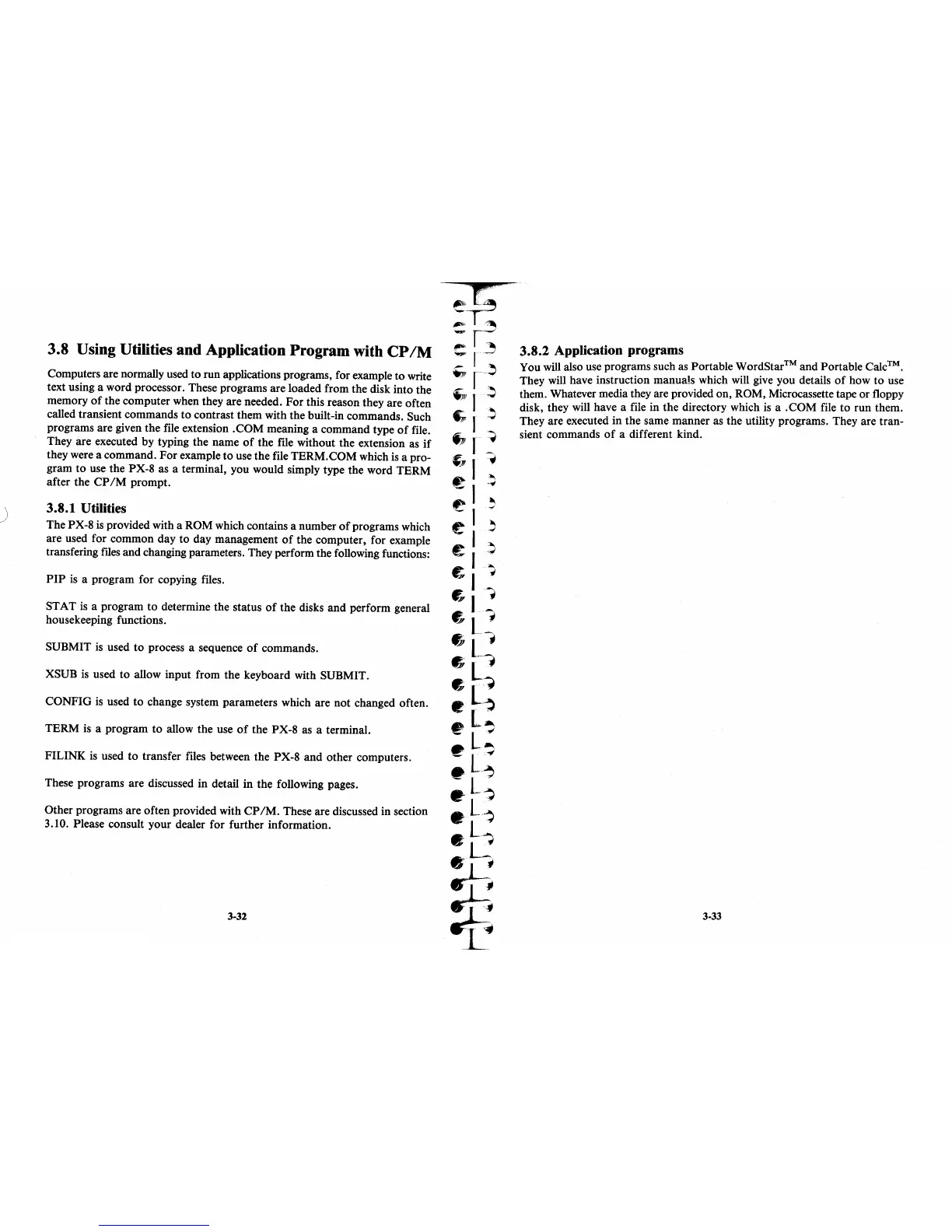)
3.8 Using Utilities and Application Program with
CP
1M
Computers are normally used to run applications programs, for example to write
text using a word processor. These programs are loaded from the disk into the
memory
of
the computer when they are needed.
For
this reason they are often
called transient commands
to
contrast them with the built-in commands. Such
programs are given the file extension .COM meaning a command type
of
file.
They are executed by typing the name
of
the file without the extension as
if
they were a command. For example
to
use the file TERM. COM which
is
a pro-
gram
to
use the PX-8 as a terminal, you would simply type the word TERM
after the
CP
1M
prompt.
3.8.1 Utilities
The PX-8
is
provided with a ROM which contains a number
of
programs which
are used for common day
to
day management
of
the computer, for example
transfering
files
and changing parameters. They perform the following functions:
PIP
is
a program for copying files.
STAT
is
a program to determine the status
of
the disks and perform general
housekeeping functions.
SUBMIT
is
used
to
process a sequence
of
commands.
XSUB
is
used
to
allow input from the keyboard with SUBMIT.
CONFIG
is
used to change system parameters which are not changed often.
TERM
is
a program
to
allow the use
of
the PX-8 as a terminal.
FlUNK
is
used
to
transfer files between the PX-8 and other computers.
These programs are discussed in detail in the following pages.
Other programs are often provided with
CP
1M. These are discussed in section
3.10. Please consult your dealer for further information.
3-32
3.8.2 Application programs
You
will
also use programs such as Portable WordStar™ and Portable Calc™.
They will have instruction manuals which will give you details
of
how
to
use
them. Whatever media they are provided on, ROM, Microcassette tape or floppy
disk, they will have a file in the directory which
is
a .COM file
to
run them.
They are executed in the same manner as the utility programs. They are tran-
sient commands
of
a different kind.
3-33
